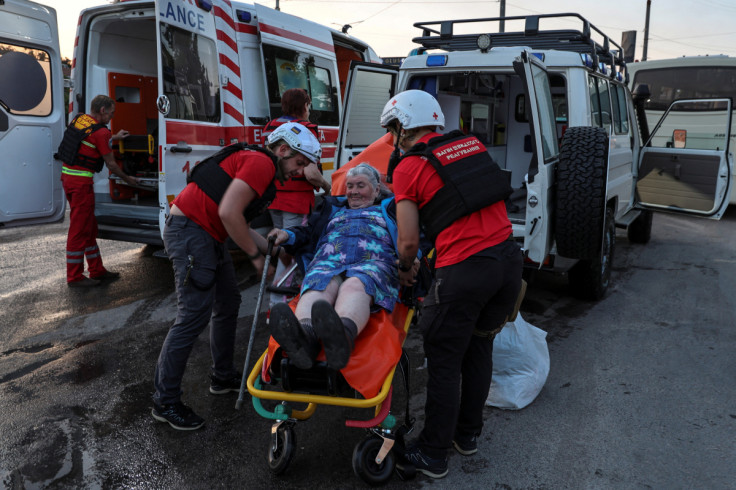Kherson Residents Flee Under Artillery Fire After Collapsed Kakhovka Dam Floods Homes

Distraught residents of Ukraine's Kherson evacuated their homes under artillery fire on Tuesday after they were flooded by the rupture of a vast dam upstream in a disaster that Kyiv and Moscow have blamed on each other.
Some residents cried as they packed belongings into cars. A meteorologist measuring the river level at the scene told Reuters the water was 3.5 metres (11.5 ft) higher than on Monday, before the dam was destroyed.
Kherson, on the shores of Ukraine's vast Dnipro river, faces the Russian-controlled eastern bank.
Around 60 kilometres (37 miles) upstream lay the Nova Kakhovka dam, a 3.2 km-long 1950s structure which Kyiv accused Russia of blowing up in an "act of terrorism."
The Kremlin blamed Ukraine, saying it was trying to distract from the launch of a major counteroffensive Moscow says is faltering. Some Russian-installed officials said the dam had collapsed on its own.
Mykola, a 73-year-old pensioner, traipsed down the street towards dry land, soaked from the shoulders down and carrying what few possessions he could save. He said the water in his apartment had been up to his chest.
Minutes later, cracks of incoming artillery sent people running for cover.
Shelter could not be easily found, as water crept silently higher and higher on Kherson's streets.
On Tuesday evening, Reuters reporters heard four incoming artillery blasts in close proximity to a flooded residential area in southern Kherson from which civilians were evacuating.
Ukraine's interior minister said earlier Russia was shelling areas from where people were being evacuated, and that two police officers had been wounded.
Kherson, which had a pre-war population of nearly 300,000, was occupied by Russian forces for eight months after Moscow invaded Ukraine last year.
Since it was retaken by Kyiv last November, Kherson has experienced regular heavy shelling from Russian forces across the Dnipro river.
Before she was forced to flee the incoming shelling, 56-year-old Lora, a hydro-meteorologist working for local authorities, was measuring the water level using a depth stick.
Speaking on Tuesday evening, she said the water was 3.5 metres higher than before the dam had collapsed, and that it was still rising, albeit at a slower rate of about 6 cm (2.4 inches) every 30 minutes, about half the rate observed earlier in the day.
"This is an atypical war, unworthy of people. It's hardly showing the art of war to blow up a dam," Lora said.
Some locals came to watch the waters rise, while others helped evacuate people from their homes.
Local resident Kostya, 25, was one of those assisting evacuations as homes filled with water, helping a police officer get his young daughter to dry land along a path made precarious by shattered glass from an earlier shelling.
"There are still old people in there, they're refusing to leave ... those homes are filling up with water," he said, pointing at the old low-rise block he had come from.
Oksana wiped away tears as she unloaded plastic bags full of her belongings from her son-in-law's car. The 53-year-old woman's house had been flooded on Tuesday morning. The contents of the bags was all she could save.
"Everything is floating," she said. "All the furniture, the food in the fridge, all the flowers, it's all floating. I don't know what to do."

© Copyright Thomson Reuters 2024. All rights reserved.




















